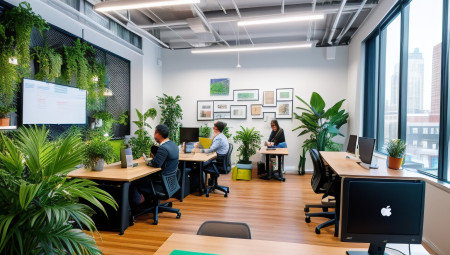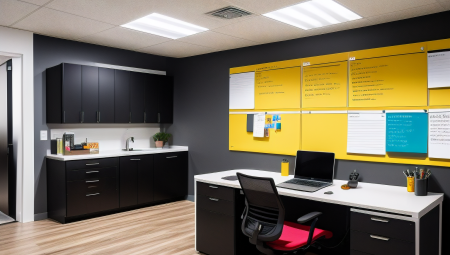Innovations in technology continue to shape the way we live and work, and at the forefront of these advancements are product development engineers. As the demand for innovative products grows, so does the need for skilled professionals who can spearhead the development process. In this blog post, we will explore the dynamic role of a product development engineer and the essential skills required to thrive in this field. From understanding the latest technological advancements to researching market trends and consumer needs, we will delve into the multifaceted responsibilities of a product development engineer. We will also discuss the importance of collaboration with cross-functional teams, the implementation of systematic product development processes, and the utilization of prototyping and testing techniques. Additionally, we will examine the vital role of optimizing products for efficiency and sustainability and the challenges that product development engineers may encounter. Finally, we will explore the evaluation of the success and impact of innovations, emphasizing the significance of continuous improvement in this ever-evolving industry. Join us in navigating the exciting world of product development engineering and discover how you can become an instrumental part of innovating the future.
Table of Contents
Understanding the role of a product development engineer
Product development engineers play a crucial role in the creation and improvement of products that we use in our everyday lives. They are responsible for managing the entire process of product development, from the initial concept to the final launch. This involves working closely with design teams, research and development departments, and manufacturing teams to ensure that the product meets the needs of the market.
One of the key responsibilities of a product development engineer is to research market trends and consumer needs. They must be able to analyze data and gather insights that will help in the design and development process. Additionally, they need to collaborate with cross-functional teams to ensure that all aspects of the product’s development are aligned with the company’s goals and objectives.
Product development engineers also need to have a strong understanding of the latest technological advancements. They must be able to utilize prototyping and testing techniques to ensure that the product meets quality standards and is ready for mass production. Furthermore, they need to optimize products for efficiency and sustainability, ensuring that the end product is not only functional but also environmentally friendly.
Overall, the role of a product development engineer is multifaceted and requires a diverse set of skills. They must be able to navigate through challenges and obstacles, and evaluate the success and impact of innovations to continuously improve and innovate in the product development process.
Acquiring the essential skills for the job
When it comes to product development engineering, there are certain essential skills that are required to succeed in the field. One of the most important skills to acquire is a strong foundation in mathematics and physics, as this will form the basis of understanding the principles behind product design and development. Additionally, a thorough knowledge of computer-aided design (CAD) software is essential for creating and designing product prototypes and models.
Another crucial skill for product development engineers is strong problem-solving abilities. The ability to identify issues and come up with innovative solutions is a key aspect of the job. This often involves working with cross-functional teams to brainstorm and implement solutions, so excellent communication and teamwork skills are also important.
Furthermore, a good understanding of manufacturing processes and materials science is vital for product development engineers. This includes knowledge of materials properties, production techniques, and quality control. Being able to optimize products for efficiency and sustainability requires a deep understanding of how materials and manufacturing processes interact.
In conclusion, acquiring the essential skills for a job in product development engineering requires a combination of technical knowledge, problem-solving abilities, and teamwork skills. By mastering these skills, aspiring product development engineers can position themselves for success in this dynamic and innovative field.
Exploring the latest technological advancements
Technology is constantly advancing, and as a product development engineer, staying up to date with the latest innovations is crucial. The rapid pace of technological advancements has a significant impact on the way products are developed and brought to market. From artificial intelligence and machine learning to augmented reality and 3D printing, exploring and understanding these new technologies is essential for driving innovation in product development.
Keeping abreast of the latest technological advancements allows product development engineers to identify opportunities for integrating cutting-edge technologies into new products. By leveraging advancements in materials, software, and manufacturing processes, engineers can create products that are more efficient, sustainable, and responsive to consumer needs.
Moreover, exploring the latest technological advancements provides valuable insights into emerging trends and disruptions within the industry. This knowledge enables engineers to anticipate and adapt to changes in the competitive landscape, giving them a competitive edge in developing successful products.
Ultimately, for product development engineers, exploring the latest technological advancements is not only beneficial for keeping pace with innovation but also essential for driving forward-thinking and impactful product development strategies.
Researching market trends and consumer needs
In order to be successful in product development, it is essential to research market trends and consumer needs thoroughly. By staying informed about the latest market developments and understanding what customers are looking for, product development engineers can ensure that their products are relevant and well-received. This involves analyzing data from various sources, such as sales figures, industry reports, and customer feedback.
Furthermore, understanding consumer needs requires empathy and the ability to put oneself in the shoes of the target audience. This might involve conducting surveys, focus groups, or interviews to gather insights into what customers are looking for in a product. By gathering and analyzing this information, product development engineers can tailor their products to meet the specific needs and preferences of their target market.
Researching market trends and consumer needs also involves keeping an eye on the competition. By understanding what other companies are doing and what products they are offering, product development engineers can identify gaps in the market and potential opportunities for innovation.
Overall, researching market trends and consumer needs is a crucial step in the product development process, as it ensures that the products being developed are relevant, competitive, and well-suited to the needs and preferences of the target market.
Collaborating with cross-functional teams
Collaborating with cross-functional teams is a crucial aspect of product development. It involves working with individuals from various departments and disciplines within an organization to achieve a common goal. This collaboration allows for the pooling of diverse skills, knowledge, and expertise, leading to more innovative and effective solutions. The input of team members from different backgrounds can provide unique perspectives that may not have been considered otherwise.
Effective collaboration with cross-functional teams requires clear communication and an understanding of each team member’s role and responsibilities. It is essential to establish a culture of openness and respect, where all team members feel valued and heard. This approach fosters an environment where ideas can be freely shared, debated, and refined, ultimately leading to a stronger end product.
One of the challenges of collaborating with cross-functional teams is managing different priorities and timelines. Each department may have its own objectives and deadlines, which can create conflicts and potential roadblocks. However, through effective communication and alignment of goals, teams can work together to overcome these challenges and deliver a cohesive product that meets the needs of all stakeholders.
Ultimately, collaborating with cross-functional teams is essential for successful product development. By leveraging the diverse expertise and perspectives of each team member, organizations can create products that are more innovative, impactful, and relevant to the market.
Implementing a systematic product development process
Implementing a systematic product development process is crucial for ensuring the smooth and efficient creation of new products. This process involves carefully planning and organizing each stage of product development, from ideation to launch. By establishing a systematic approach, product development engineers can streamline the entire process and minimize the potential for errors or setbacks.
One key aspect of implementing a systematic product development process is setting clear goals and objectives. This involves defining the specific features, functionality, and performance requirements of the new product. By clearly outlining these goals, engineers can ensure that the development process remains focused and on track.
In addition, effective communication is essential for implementing a systematic product development process. This includes regular collaboration and alignment with cross-functional teams, such as design, engineering, marketing, and operations. Clear and open communication ensures that everyone involved in the product development process is on the same page and working towards common goals.
Furthermore, a systematic product development process requires thorough testing and validation at each stage of development. This includes prototyping, product testing, and user feedback, which helps to identify and address any issues or shortcomings early on. By incorporating testing and validation into the process, engineers can improve product quality and minimize the risk of costly rework later in the development cycle.
Utilizing prototyping and testing techniques
When it comes to product development, one of the crucial steps in the process is utilizing prototyping and testing techniques. Prototyping allows product developers to create a preliminary version of the product, which can then be tested to identify any flaws or areas for improvement. This process is essential for ensuring that the final product meets the desired specifications and functions as intended.
Utilizing prototyping techniques also allows for early feedback from stakeholders and potential users, which can help to refine the design and functionality of the product before it goes into full-scale production. Whether it’s through 3D printing, virtual modeling, or other methods, prototyping provides a tangible representation of the product that can be thoroughly examined and tested.
Furthermore, testing the prototype allows product developers to identify and address any issues or weaknesses in the design and functionality of the product. This can involve various forms of testing, such as usability testing, performance testing, and reliability testing, among others. The data collected from these tests can then be used to make informed decisions about any necessary adjustments or redesigns before moving forward with production.
Ultimately, utilizing prototyping and testing techniques not only helps to ensure the quality and functionality of the final product, but also contributes to a more efficient and cost-effective product development process. By identifying and addressing any issues early on, product developers can minimize the risk of costly errors and setbacks later in the development cycle.
Optimizing products for efficiency and sustainability
Optimizing products for efficiency and sustainability is a crucial aspect of product development that has gained significant attention in recent years. Companies are increasingly recognizing the importance of creating products that not only perform well but also minimize their environmental impact. This involves a careful consideration of materials, manufacturing processes, and end-of-life disposal.
One of the key elements of optimizing products for efficiency and sustainability is design. Product development engineers need to actively seek out ways to streamline the design of products to reduce the amount of material and energy required for production. This often involves utilizing advanced modeling and simulation software to analyze different design iterations and identify opportunities for improvement.
In addition to design, the selection of materials plays a critical role in optimizing products for efficiency and sustainability. Product development engineers must assess the environmental impact of different materials, considering factors such as recyclability, energy consumption during manufacturing, and the potential for hazardous byproducts. With the rise of sustainable materials such as bioplastics and recycled metals, there are now more options than ever for creating eco-friendly products.
Finally, the end-of-life disposal of products is an essential factor in optimizing for sustainability. Product development engineers must consider how products will be disposed of once they reach the end of their life cycle. By designing products with disassembly and recycling in mind, companies can minimize the amount of waste sent to landfills and reduce their overall environmental footprint.
Overcoming challenges in product development
Product development is a complex and multifaceted process that presents a number of challenges to engineers and teams. One of the major challenges in product development is meeting deadlines while maintaining high quality standards. The pressure to deliver a product within a specified timeframe can often lead to rushed decision-making and compromised outcomes.
Another common challenge is balancing cost and quality. Engineers must work within budget constraints while still ensuring that the product meets the required performance and durability standards. Finding the right balance between cost and quality can be a delicate and difficult task.
Additionally, managing risk and uncertainty is a significant challenge in product development. Engineers must anticipate and address potential issues and roadblocks that may arise throughout the development process. Proactively identifying and mitigating risks is essential to the success of a product.
Finally, communication and collaboration can also be challenging in product development, especially in environments with cross-functional teams. Ensuring that all team members are aligned and working towards the same goals can be a complex undertaking.
Evaluating the success and impact of innovations
When it comes to evaluating the success and impact of innovations, it’s important to consider both quantitative and qualitative measures. This means looking at the data and metrics to determine the financial and operational impact, as well as gathering feedback and testimonials from customers and stakeholders to understand the perceived value and effectiveness of the innovations.
One way to evaluate success is to set clear key performance indicators (KPIs) that align with the goals of the innovation. These KPIs could include metrics such as increased revenue, cost savings, improved efficiency, and customer satisfaction. By tracking these KPIs over time, it becomes possible to measure the impact of the innovation and make data-driven decisions about its future.
In addition to quantitative measures, it’s also essential to consider the qualitative impact of the innovation. This involves gathering feedback from customers, employees, and other stakeholders to understand their experiences and perceptions. This feedback can provide valuable insights into the overall success of the innovation and identify areas for improvement.
Overall, evaluating the success and impact of innovations requires a comprehensive approach that considers both quantitative and qualitative measures. By tracking KPIs and gathering feedback, companies can gain a holistic understanding of the effectiveness of their innovations and make informed decisions about their future development and implementation.





